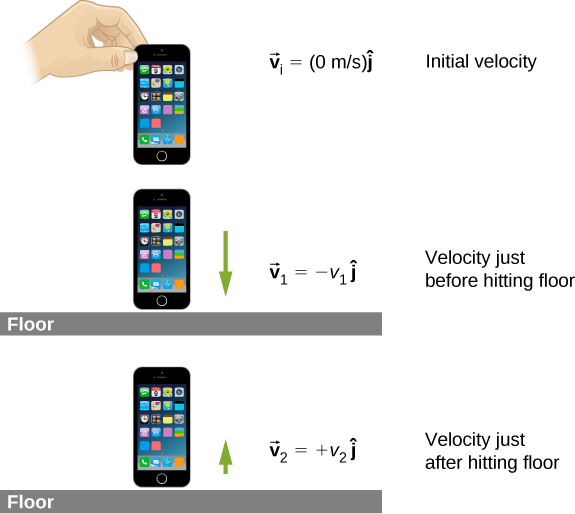| << Chapter < Page | Chapter >> Page > |
Check Your Understanding The U.S. Air Force uses “10 g s” (an acceleration equal to ) as the maximum acceleration a human can withstand (but only for several seconds) and survive. How much time must the Enterprise spend accelerating if the humans on board are to experience an average of at most 10 g s of acceleration? (Assume the inertial dampeners are offline.)
To reach a final speed of
at an acceleration of 10
g , the time
required is
We need to make a couple of reasonable estimates, as well as find technical data on the phone itself. First, let’s suppose that the phone is most often dropped from about chest height on an average-height person. Second, assume that it is dropped from rest, that is, with an initial vertical velocity of zero. Finally, we assume that the phone bounces very little—the height of its bounce is assumed to be negligible.
The impulse equals the change in momentum,
so
Next, the change of momentum is
We need to be careful with the velocities here; this is the change of velocity due to the collision with the floor. But the phone also has an initial drop velocity [ ], so we label our velocities. Let:
[link] shows the velocities at each of these points in the phone’s trajectory.

With these definitions, the change of momentum of the phone during the collision with the floor is
Since we assume the phone doesn’t bounce at all when it hits the floor (or at least, the bounce height is negligible), then is zero, so

Notification Switch
Would you like to follow the 'University physics volume 1' conversation and receive update notifications?